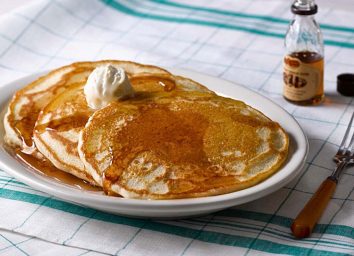10 Foods You Should Never Add to Your Salad
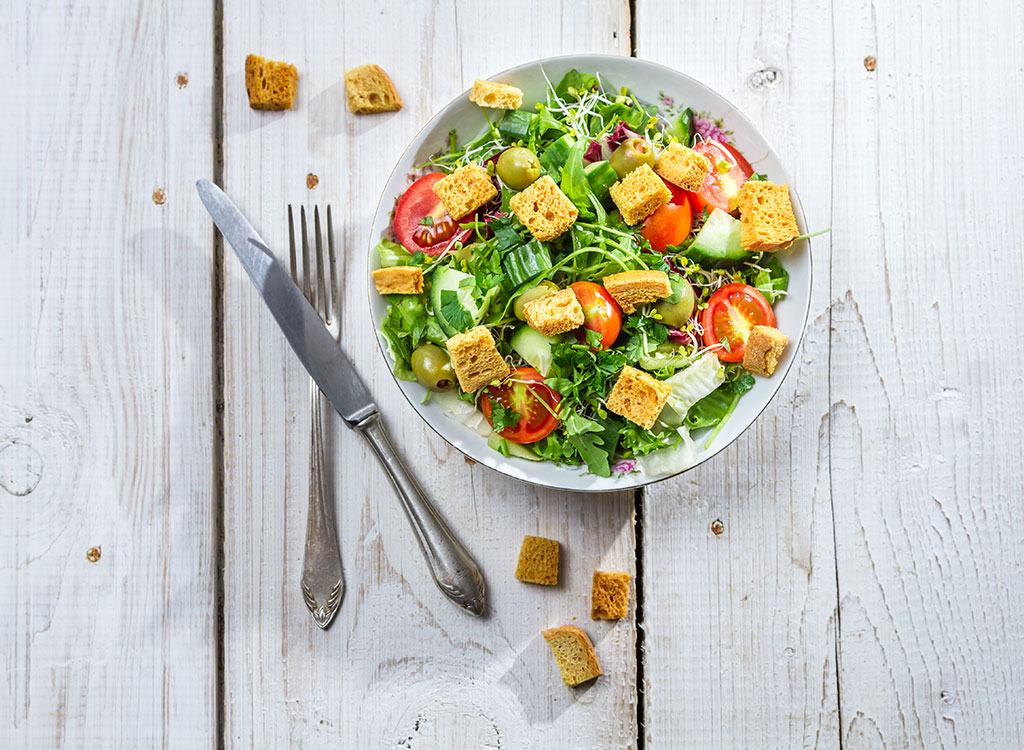
At its heart, a salad is a slim starter. But tack on even a spoonful of certain ingredients and the calorie tally—and additive count—can add up dangerously quickly. (Just think: One tablespoon of creamy garlic Caesar, one of our 16 worst salad dressing picks, has 85 calories and 10 grams of fat.)
So how can you amp things up and keep the calories down, whether you’re at the salad bar or ordering off the menu? We turned to the nutrition pros to find out what foods you should never add to your salad.
Creamy Dressing
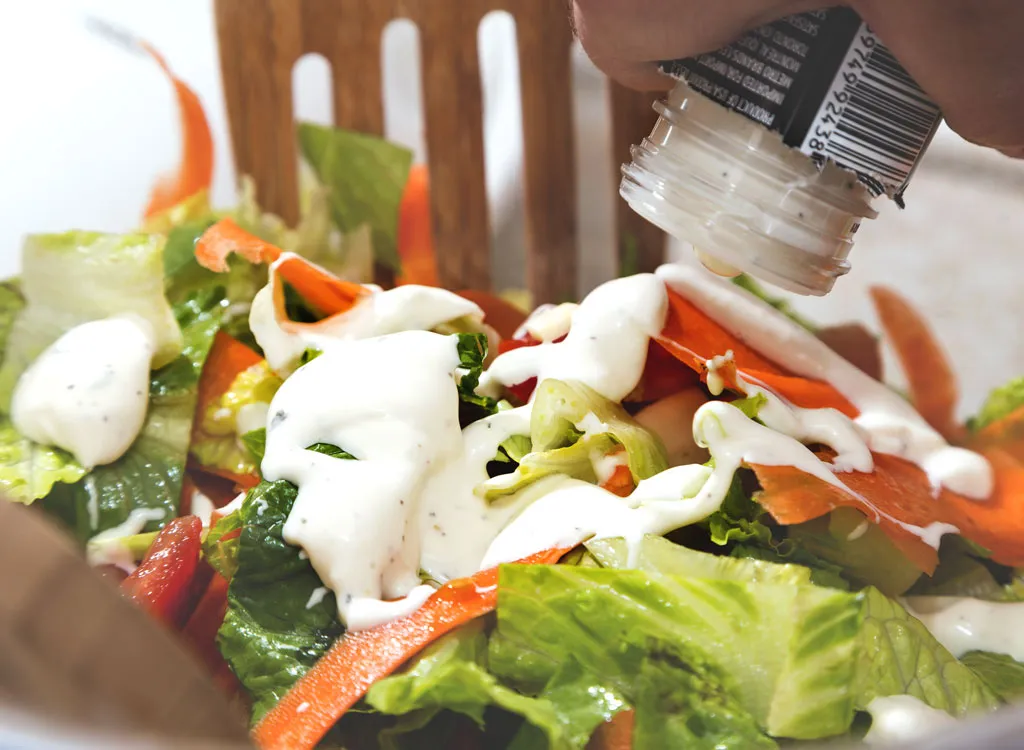
“Ranch, blue cheese, and other creamy dressings are usually high in calories and fat that can quickly turn your good intentions of a salad into a mega-dent in your diet,” says Bonnie Taub-Dix, RD, creator of BetterThanDieting.com and author of Read It Before You Eat It: Taking You From Label to Table.
For similar rich texture—without the calorie catastrophe—”blend some balsamic vinegar with an avocado,” Taub-Dix suggests. “The avocado provides heart-healthy fat along with a satisfying texture and distinctive flavor.”
Fat-Free Dressing
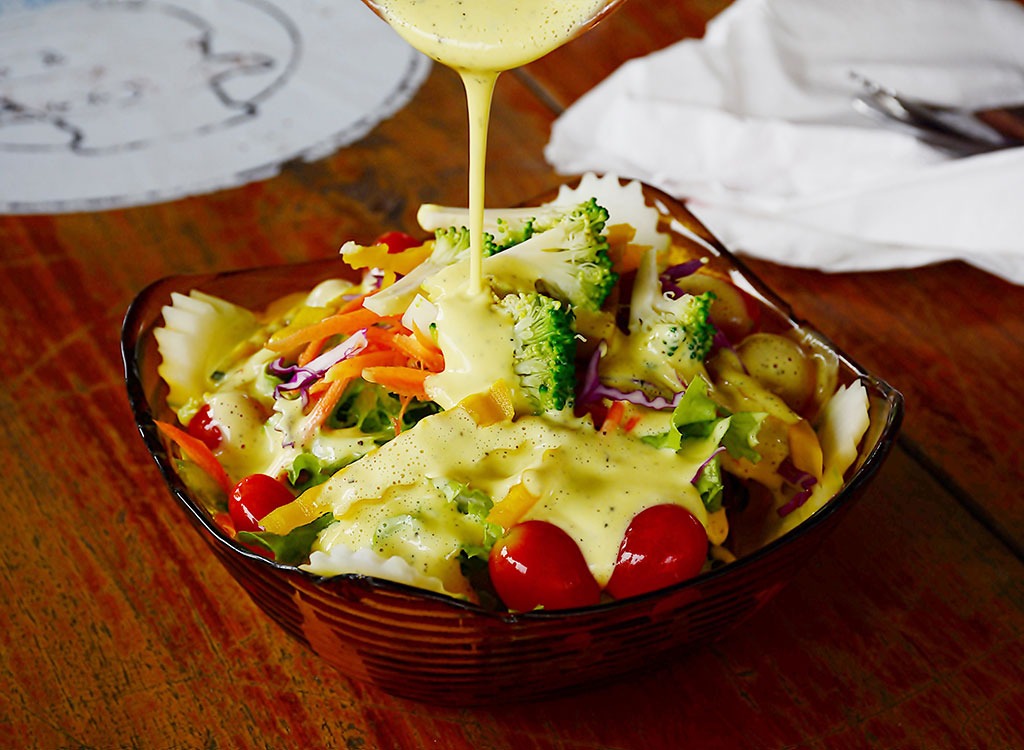
Similarly scary, in our RDs’ opinions, are the artificial ingredient-laden reduced-fat or fat-free drizzles. “When fat is removed, food manufacturers generally add extra sugar to boost flavor and mouthfeel,” says Caroline Weeks, RD, a clinical registered dietitian in Des Moines, IA. “Added sugar is much more detrimental to long-term health than fat, and in some cases is more directly linked to chronic disease and metabolic syndrome.”
Plus, your cells need fat to absorb the fat-soluble vitamins (such as the vitamin K in kale or the beta-carotene in carrots), according to research published in The American Journal of Clinical Nutrition.
Concerned about the calorie count in full-fat dressing? Try hummus mixed with fresh herbs and a bit of citrus juice. Or, give this concoction, courtesy of Jenna A. Werner, RD, creator of Happy Strong Healthy, a shot. “Top your plate with fresh lemon juice, your favorite vinegar, a teaspoon of honey and a teaspoon of olive oil.”
Whatever dressing you choose, be sure to serve it smart. “Always keep dressing on the side. Dip your fork into the dressing and then into the salad (not the other way around) to make sure you’re not oversaturating the greens,” Werner says.
Creamy “Salads”
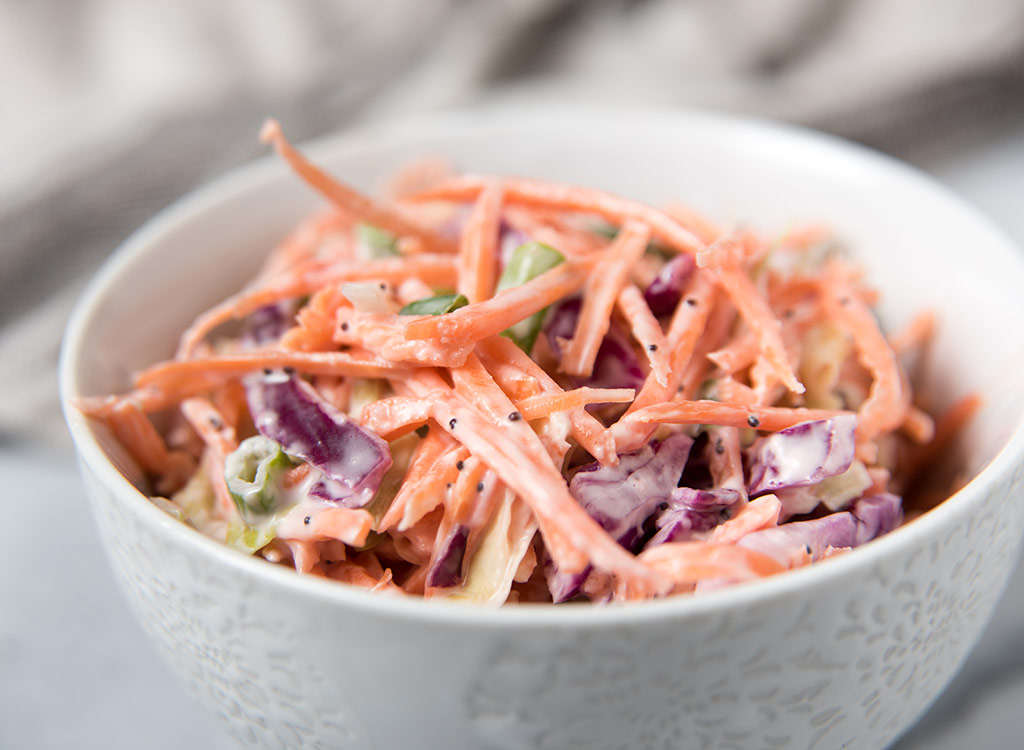
“Salad” can be a very flexible term. Just ask any Midwesterner who has scooped up mounds of Jell-O salad at a potluck. That’s why all of our dietitians recommend going clean and green. “Opt for fresh or frozen fruit for to satisfy your sweet tooth rather than something like Oreo cream fluff or another whipped topping-based side, as the latter is high in artificial additives and sugars,” Weeks says.
Taub-Dix agrees: “I love to showcase fruit such as cherries, apricots, and mangoes since the sweet taste is often attractive even to those who may not be salad-lovers, like my kids.”
Creamy salads that fall on the savory side are also worth skipping, Werner says, or stick with a small portion. “Mayonnaise-based bean and vegetable salads are loaded with fat. Instead, seek out veggies that are grilled or raw or try plain beans such as edamame or chickpeas. These healthier options also have a nice mix of carbs, protein, and fiber to fill you up—not out.”
Croutons
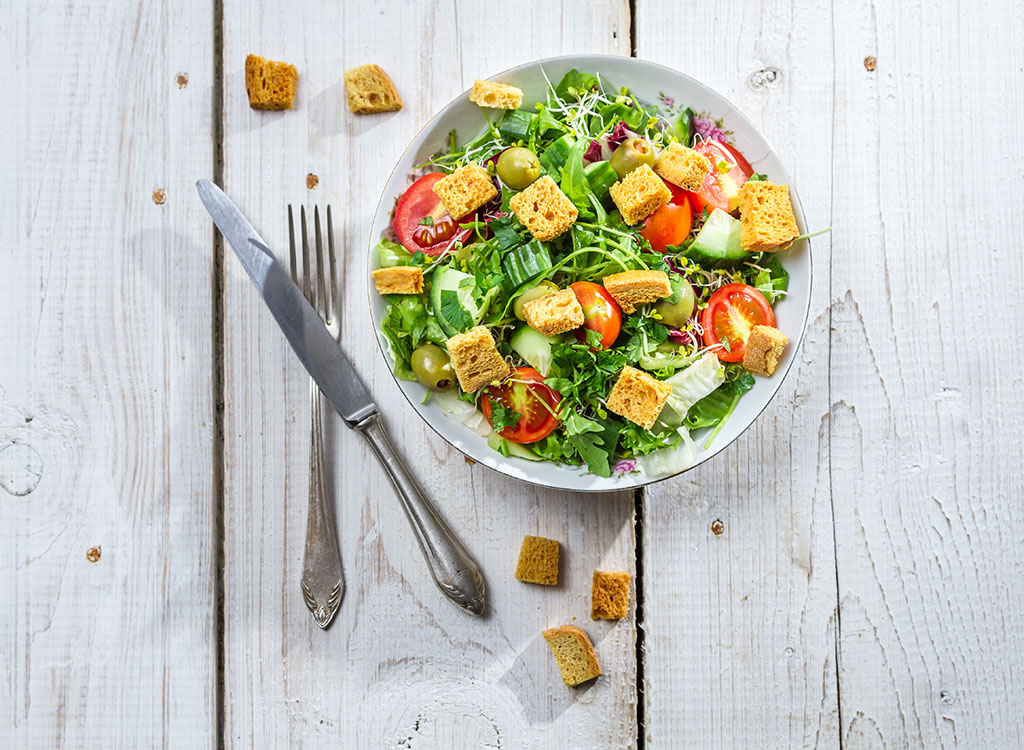
Crunch consciously by sprinkling on nuts rather than white bread croutons, which are “void of any nutritional value,” Taub-Dix says. “For some healthy crunch, try adding a variety of nuts. Not only are they composed of healthy fats but they also add a hefty dose of protein. An ounce of almonds, for example, provides around six grams of protein.” (About the same amount of protein you’d find in an ounce of cheese or chicken.)
Candied Nuts
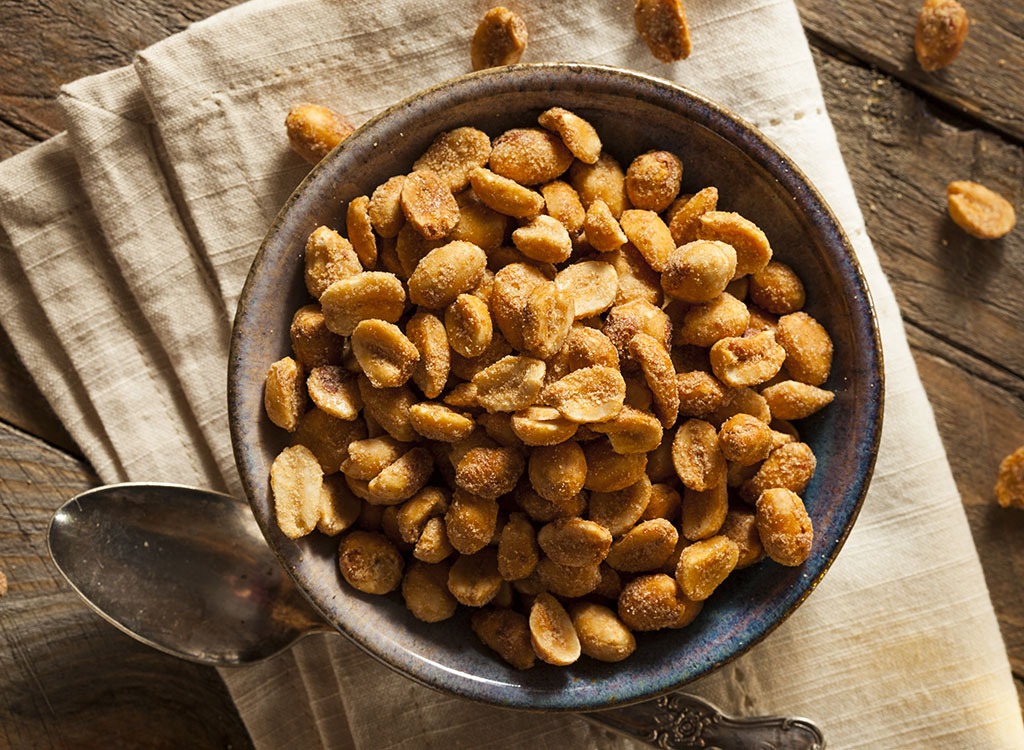
If you do go nuts, just go nuts wisely, Weeks says. “Candy-coated nuts can be quite high in sugar.” The caramelized coating is often the result of butter and brown sugar. Instead, opt for lightly-salted or plain nuts, or roasted chickpeas for crunch.
Bacon
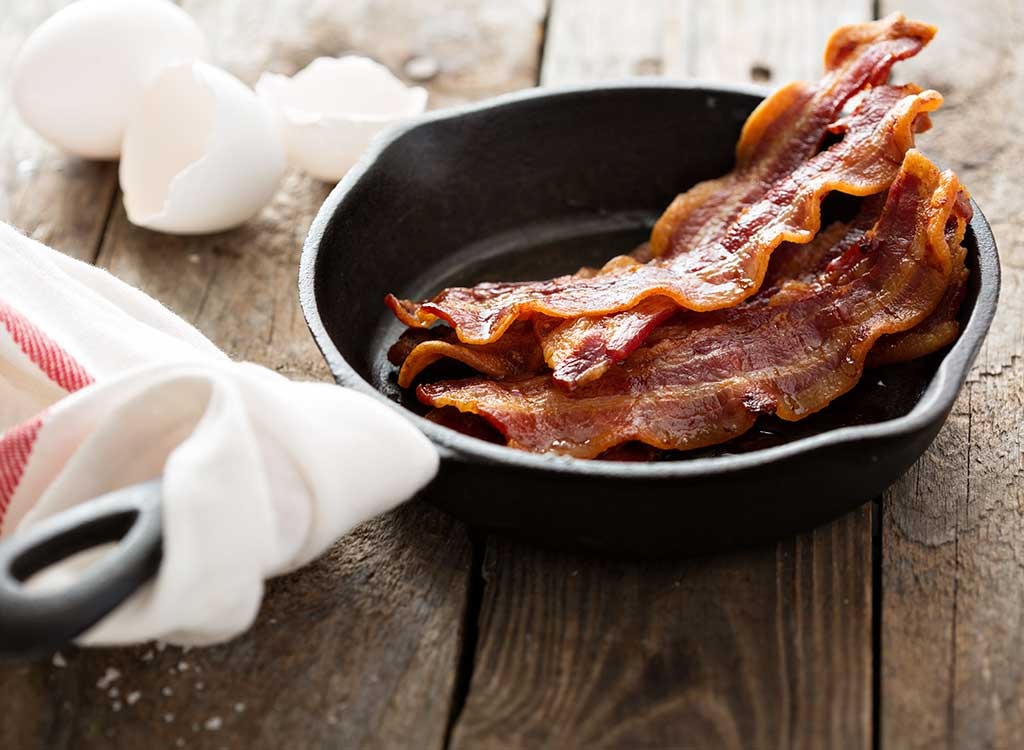
Get your salt fix by adding a few pickle slices rather than bacon, Taub-Dix recommends, to limit the extra fat. But since pickles are still high in sodium, “slice them thinly and disperse them throughout the salad,” she says.
Bacon Bits
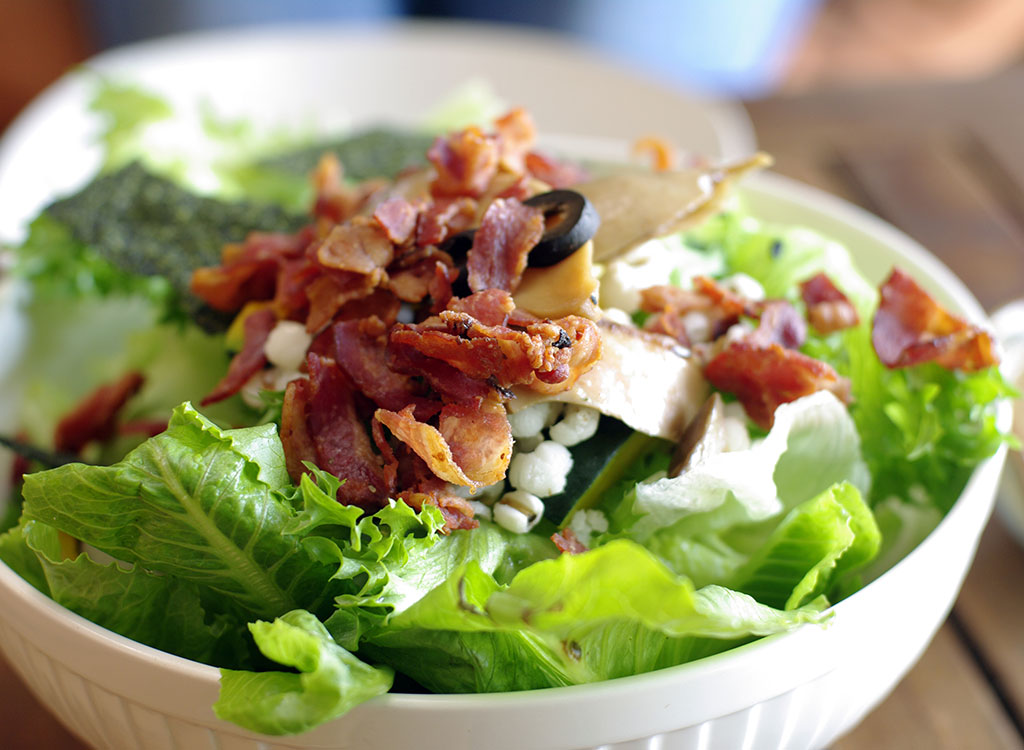
Worse than regular bacon slices, Werner counters, are bacon bits. “These have way too much sodium,” she says. Plus, the bits are sometimes not even bacon at all, and are made with soy, flours, and additives. For a savory protein-packed addition, try a half hard-boiled egg instead or toss in a small handful of grilled chicken or shrimp.
Corn
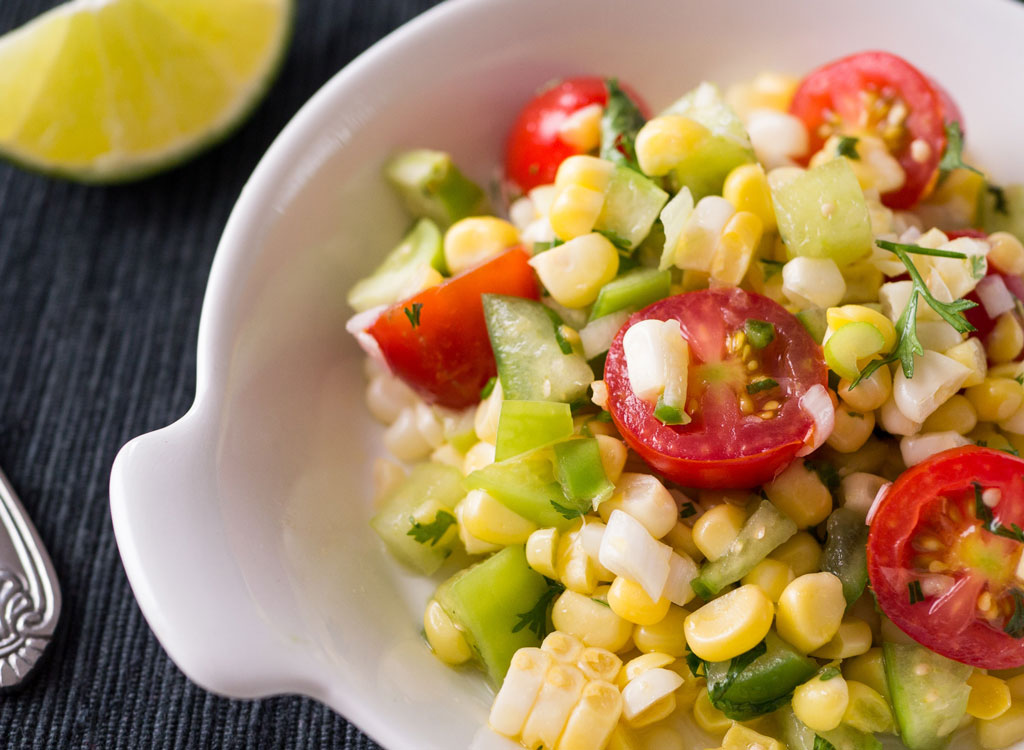
“One easy way to cut calories is to avoid starchy carbs in excess, corn being one of them,” Weeks says, and potatoes being another. “Aim to vary the color in your salad and include as many dark green, purple, and red colors as you can; these tend to be non-starchy forms of vegetables.”
Pasta Salad
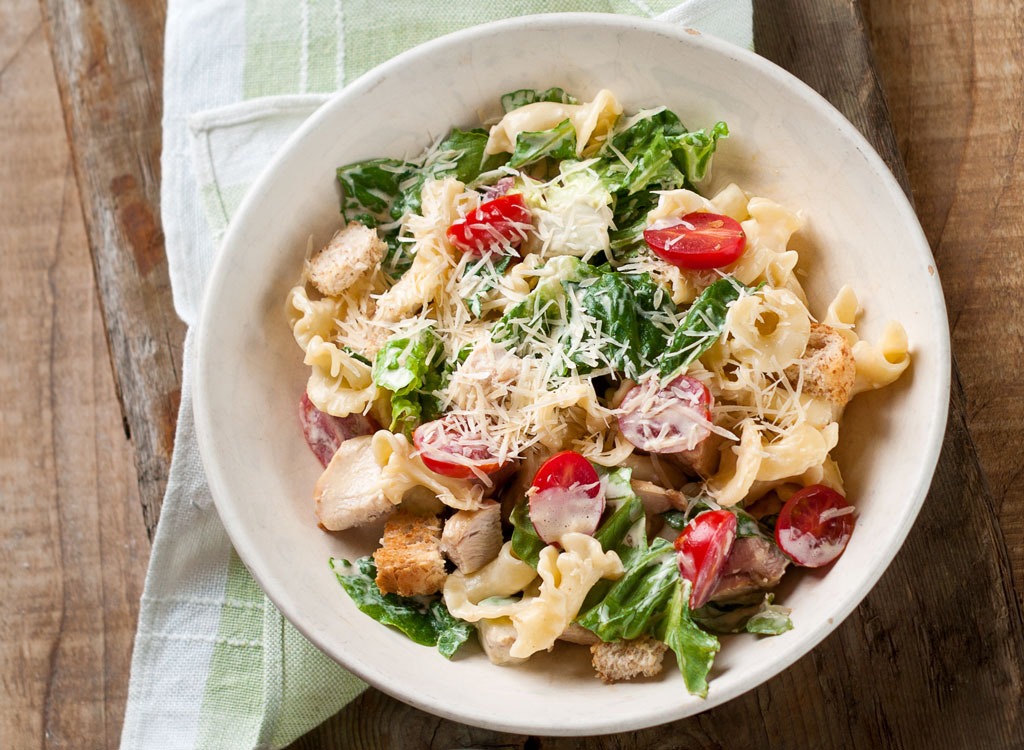
Here’s one time when it’s best not to use your noodle. “Pasta salad on salad bars is almost always made with a white pasta, which is a refined carbohydrate,” Weeks says. Keep your eyes peeled for wild rice or quinoa for a similar carb fix—just in whole grain fashion (that won’t leave you with the crazy blood sugar crash in an hour).
Fried Garnishes
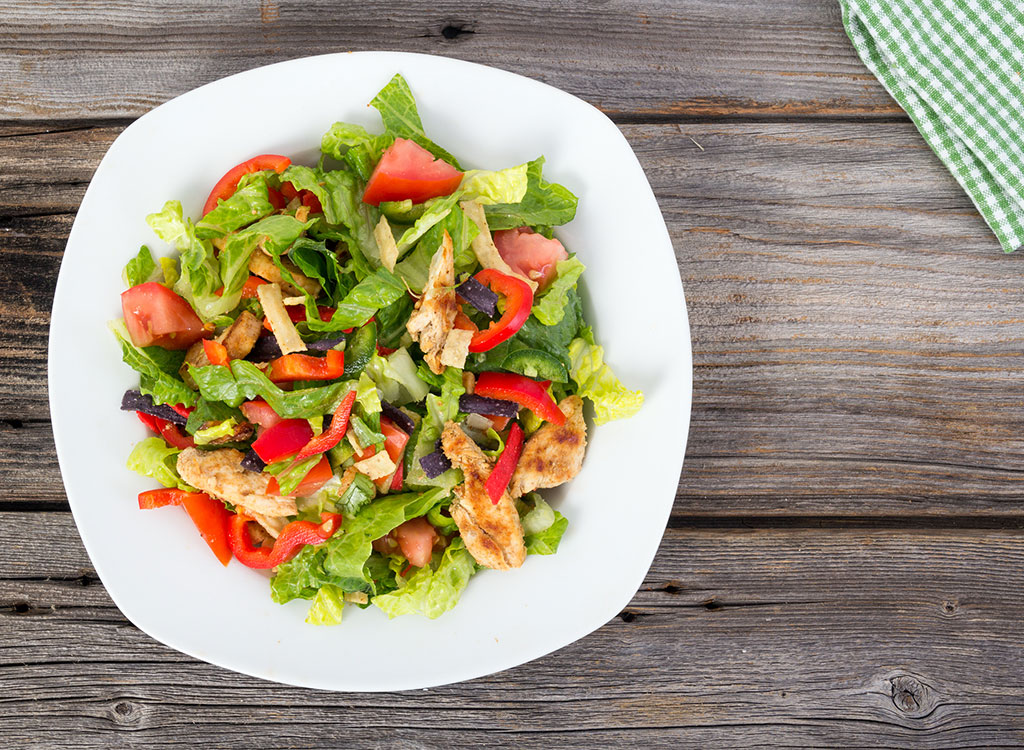
Whether its fried onions, crunchy noodles or wonton strips, the fat in these seemingly harmless toppings can add up quickly. “Go for raw or unsalted nuts or seeds, or add extra raw veggies like carrots, jicama or broccoli to get similar crunch with next to no extra calories.”


